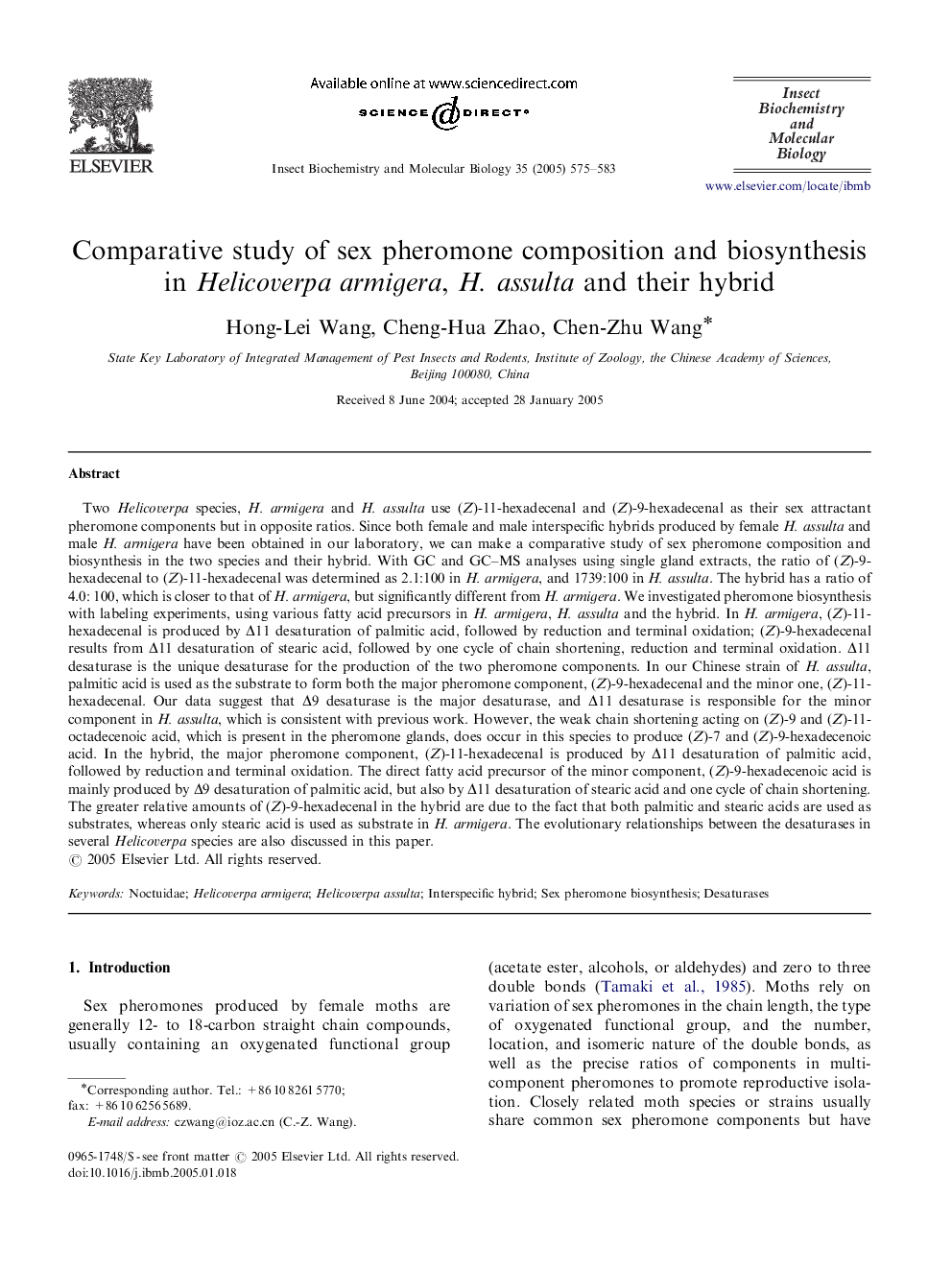| Article ID | Journal | Published Year | Pages | File Type |
|---|---|---|---|---|
| 10824546 | Insect Biochemistry and Molecular Biology | 2005 | 9 Pages |
Abstract
Two Helicoverpa species, H. armigera and H. assulta use (Z)-11-hexadecenal and (Z)-9-hexadecenal as their sex attractant pheromone components but in opposite ratios. Since both female and male interspecific hybrids produced by female H. assulta and male H. armigera have been obtained in our laboratory, we can make a comparative study of sex pheromone composition and biosynthesis in the two species and their hybrid. With GC and GC-MS analyses using single gland extracts, the ratio of (Z)-9-hexadecenal to (Z)-11-hexadecenal was determined as 2.1:100 in H. armigera, and 1739:100 in H. assulta. The hybrid has a ratio of 4.0: 100, which is closer to that of H. armigera, but significantly different from H. armigera. We investigated pheromone biosynthesis with labeling experiments, using various fatty acid precursors in H. armigera, H. assulta and the hybrid. In H. armigera, (Z)-11-hexadecenal is produced by Î11 desaturation of palmitic acid, followed by reduction and terminal oxidation; (Z)-9-hexadecenal results from Î11 desaturation of stearic acid, followed by one cycle of chain shortening, reduction and terminal oxidation. Î11 desaturase is the unique desaturase for the production of the two pheromone components. In our Chinese strain of H. assulta, palmitic acid is used as the substrate to form both the major pheromone component, (Z)-9-hexadecenal and the minor one, (Z)-11-hexadecenal. Our data suggest that Î9 desaturase is the major desaturase, and Î11 desaturase is responsible for the minor component in H. assulta, which is consistent with previous work. However, the weak chain shortening acting on (Z)-9 and (Z)-11-octadecenoic acid, which is present in the pheromone glands, does occur in this species to produce (Z)-7 and (Z)-9-hexadecenoic acid. In the hybrid, the major pheromone component, (Z)-11-hexadecenal is produced by Î11 desaturation of palmitic acid, followed by reduction and terminal oxidation. The direct fatty acid precursor of the minor component, (Z)-9-hexadecenoic acid is mainly produced by Î9 desaturation of palmitic acid, but also by Î11 desaturation of stearic acid and one cycle of chain shortening. The greater relative amounts of (Z)-9-hexadecenal in the hybrid are due to the fact that both palmitic and stearic acids are used as substrates, whereas only stearic acid is used as substrate in H. armigera. The evolutionary relationships between the desaturases in several Helicoverpa species are also discussed in this paper.
Keywords
Related Topics
Life Sciences
Agricultural and Biological Sciences
Insect Science
Authors
Hong-Lei Wang, Cheng-Hua Zhao, Chen-Zhu Wang,
